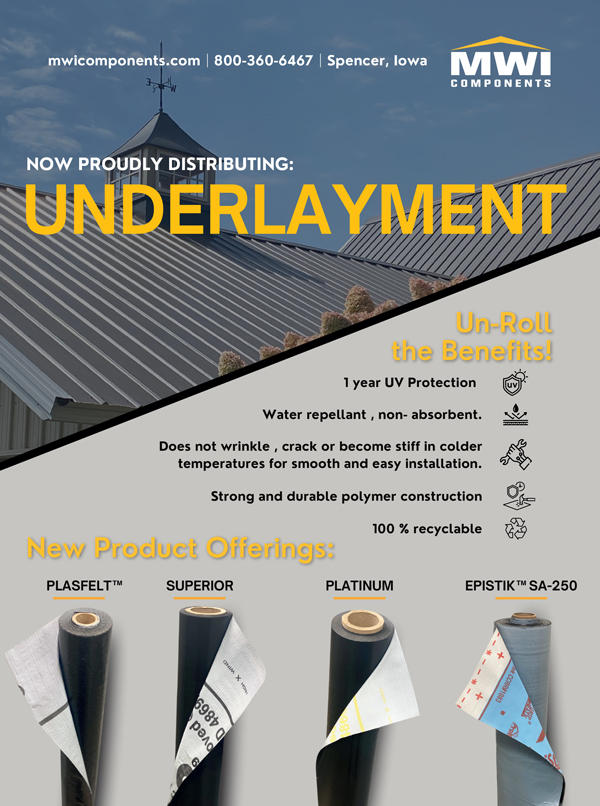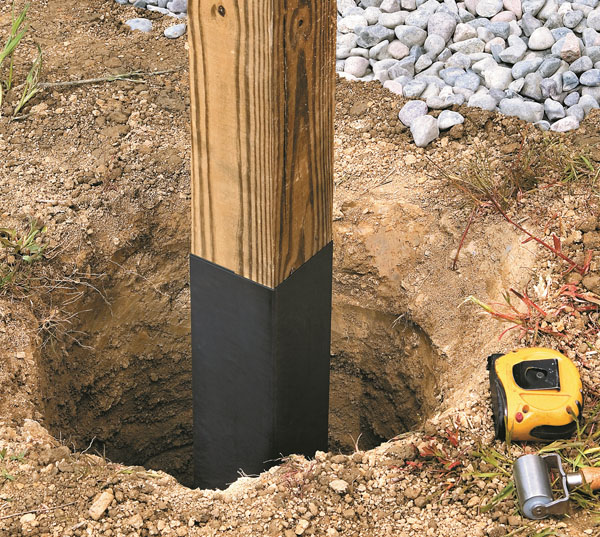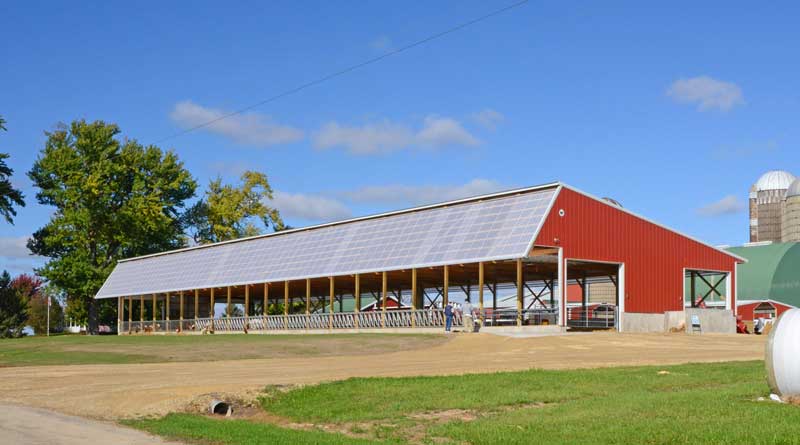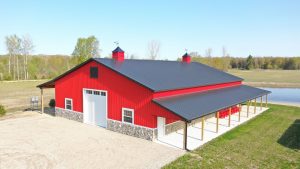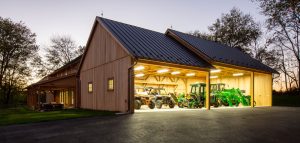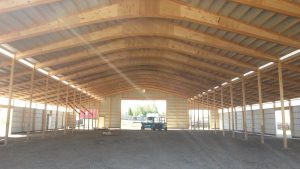By Jacob Prater
Putting a post in the ground is something most of us have done at one point or another, and it has been an important aspect of construction since the dawn of time. Whether it is a post for a building or a fence you might wonder, “Why does it work out well sometimes and not others?” Or more plainly, “Why does that post rot?” The three essential ingredients to making wood rot are oxygen, water, and fungi. Our experience will be our guide in looking at each of these factors that make wood rot.
The Science Behind Wood Rot
Have you ever seen a post that has rotted from about the ground level down maybe 10 or 12 inches, but deeper it was fine and looked fine above ground? Deeper there isn’t enough oxygen, so the process of rotting is much slower. Above the ground line, there isn’t enough water (the soil holds water next to the post). But the fungus that eats wood dwells in the soil near the surface. When you see a rotten log in the woods, you may have noticed but not registered a thing or two.
First, you may have noticed that some rotten logs look brown, and some rotten logs look whiteish. These are two broad types of fungi acting, which gives us an idea about what the wood is made from as well. The fungi that leave brown rotten logs are referred to as brown rot fungi and are eating cellulose (a component of wood) and leaving lignin (another component of wood) behind. The fungi that leave rotten logs looking whiteish are referred to as white rot fungi and they are eating lignin and leaving cellulose behind.
You may have also noticed that not all logs rot at the same speed or in the same way in the forest. Oak rots from the bark inward (as many types of wood do), but birch leaves untouched bark tubes with rotten wood in them. That birch thing is quite interesting. It turns out that birch bark is waterproof and antifungal. In fact, that birch bark was and still is used to prevent wood rotting at ground contact points, for cabin beams in particular. One just wraps the beams in birch bark at the ground contact points so the bark contacts the ground instead of the wood. (It has to be protected and dry for this to work, though.)
Without oxygen, wood may be stable for a long time. I have some slabs from a tamarack log cut in the late 1800s, and it is in fine shape after being reclaimed from where it was embedded in a creek bank for over 100 years below the current water table. I know this because the log still bore the stamp from the now defunct logging company that cut it so many years ago. When we milled it, the log still had that characteristic Pine Sol smell that tamarack has!
This preservation due to high moisture and low oxygen is true of some of these old logs pulled from where they lay in deep water after sinking during the logging boom of the early U.S. These old growth logs are often reclaimed and milled up for specialty wood products due to their tight growth rings and exceptional durability for their species. Essentially in that low or no oxygen environment, there isn’t much of anything present that wants to eat wood. While you can prevent wood rotting by excluding oxygen in a water-saturated environment, this isn’t a useful method for most construction unless you are building a dock.
For most construction purposes, your best bet to avoid wood rotting is to keep it dry. You have probably seen and maybe experienced an old barn slowly caving in. This is a process that usually begins when the roof fails. Once that roof begins to leak, the structure will start to fail and rot wherever that water gets in and wets the wood. With this lesson learned, you now know how critical that roof is, including overhangs, to keep that structure standing for a long time. Next to the roof, the grading of the building site to shed water away from the base is also important to prevent any wood with ground contact from rotting, as it keeps the soil around the base of the structure drier. (Drains and gutters are of import here too.)
Rot-Resistant and Treated Wood
Another way to set the odds in your favor of not having your post in the ground rot is to treat that wood or select a wood species that is rot resistant. Where I grew up, there was a method to treat the bottom of posts that I later heard a friend in Wisconsin refer to as the Tennessee method (I am from eastern Tennessee). Basically, you would char the bottom of the post in a fire. Posts treated this way were mostly of white oak to start with, so this was tough, durable timber and already resistant to water intrusion into the wood. (White oak has closed pores, while red oak does not, so it rots easily.). The char coating then was all around the outside of the post on the ground contact portion.
Char is resistant to fungal growth and insect attack. (Those pesky buggers can speed up or facilitate the entry of fungi.) The char may also function to seal out moisture to some degree. Charred oak posts like this lasted quite a while, pushing past a century sometimes, especially if they had the additional protection of a roof over them. Selecting a wood species that is resistant to rot can really increase the longevity of a post in the ground. Wood species such as Osage orange, black locust, white oak, and various others are rot-resistant on their own.
Outside of hard-to-get woods such as cypress, redwood, teak, and some tropical woods, Osage orange may be one of the most rot-resistant woods available in the Midwest for fence posts. Osage orange, commonly called “hedge” in Kansas, will make what amounts to a 500-year post. Yes, you read that correctly. It will outlast steel and concrete most of the time.
It is hard to find a straight piece of Osage orange for a pole, but you can find plenty of fence posts from the Osage orange tree. This tough, durable wood was used for bows for native people and even sparks when you cut it with a chainsaw! The high density of the wood, large silica content, and some rot-resistant chemicals in the heartwood make hedge or Osage orange the king of fence posts where it’s available.
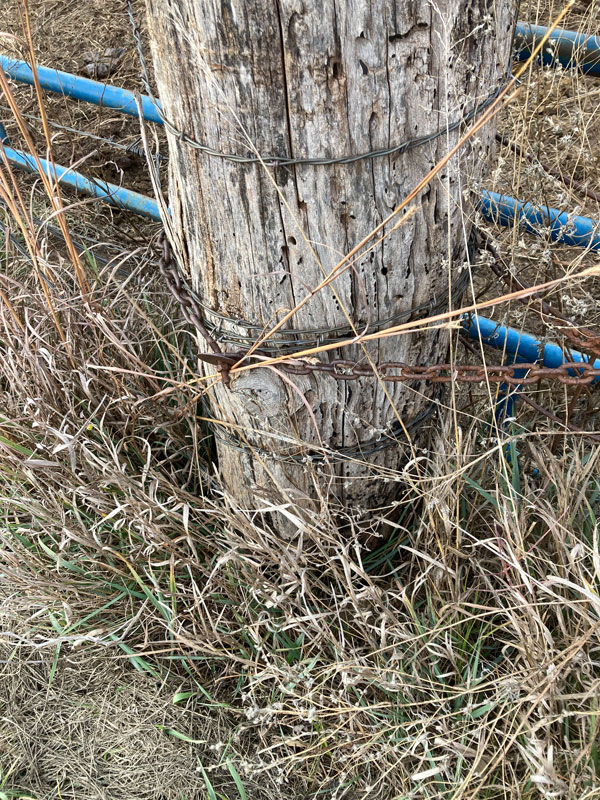
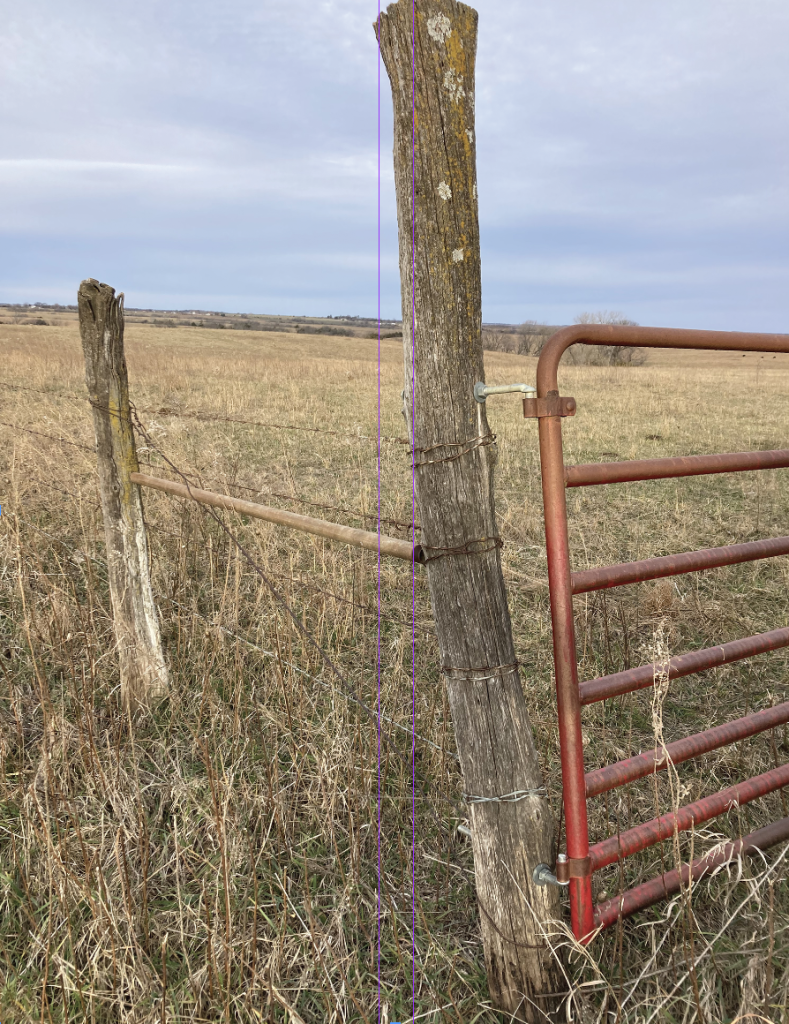
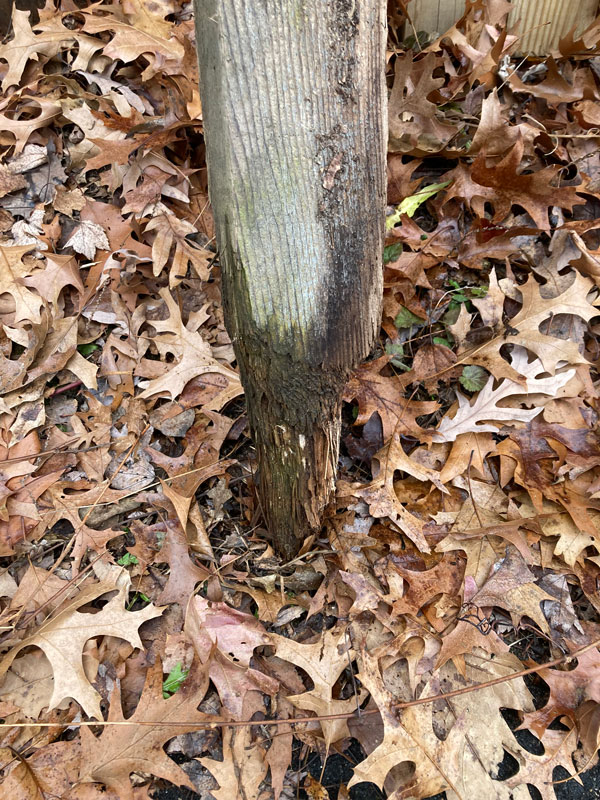
Black locust is another inherently rot-resistant wood species. You are more likely to find straight trees for poles with this wood, and you may even find commercially available black locust poles, but it is still most common to find fence posts. Black locust is also dense wood, although not quite as dense as Osage orange, and it also benefits from some rot-resistant chemicals in its heartwood. A black locust post might last up to 100 years.
The “go to” in the construction world is treated wood. Basically, you have all the wonderful advantages of southern yellow pine (strength to weight, high productivity, low cost) but you add your own industrially applied rot resistance. And so we have treated southern yellow pine. We love this stuff! It is treated to resist rot and it is light, strong, and cheap. A pressure -treated post will last five to ten years in the ground without anything special done to it.
For most construction purposes, the first line of defense against wood rotting is to keep it dry and away from soil contact. If that isn’t completely possible, then treating that wood (or selecting a rot-resistant wood) that will contact soil is the next best step. Beyond this, making the site shed water with a roof over it and grading the site around it will go a long way in preserving that wood from rot.
The Chain of Decay
There are four links to the chain of decay. Decay fungi need oxygen, a suitable temperature, moisture, and a food source to survive and thrive. To stop decay, at least one of these links needs to be broken. When wood is pressure-treated, the food source link is broken by a chemical preservative to envenom the wood fiber, so decay fungi can’t feed. Oxygen, a suitable temperature, and moisture may still be present, but without fungal activity, there will be no decay. The issue with relying on chemical protection alone is that it doesn’t last. That’s why you see the utilities adding preservative to utility poles every six to eight years. Through weathering, aging, chemical migration, and volatility, the preservative loses its toxicity, making the wood fiber a suitable, desirous food source for the decay fungi. Like pressure treating, a plastic post protector targets the food source link by permanently separating posts from soil and soil-dwelling decay fungi.
—Ken McDonnell,
Owner, Post Protector
FBN



